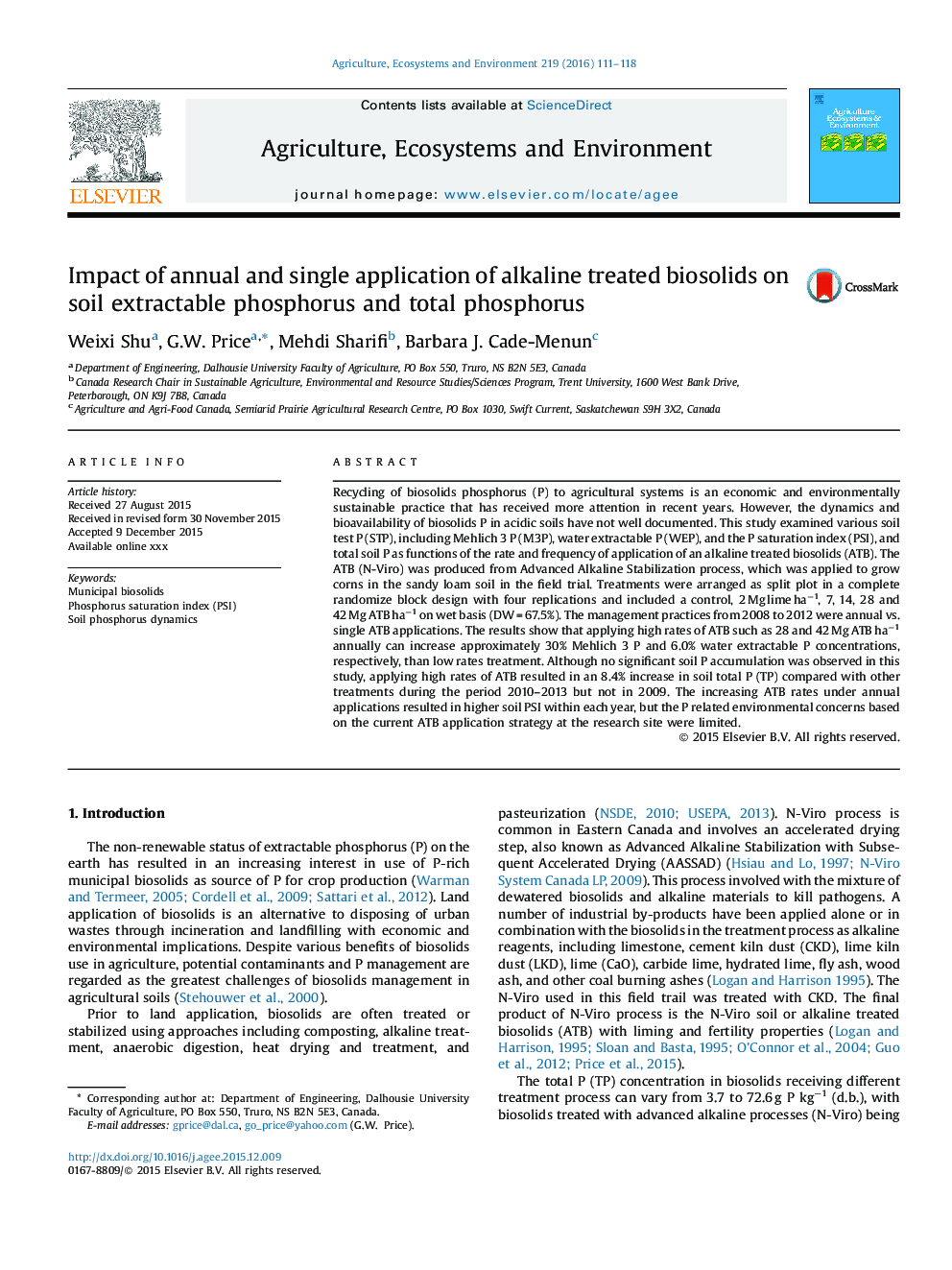| Article ID | Journal | Published Year | Pages | File Type |
|---|---|---|---|---|
| 8487522 | Agriculture, Ecosystems & Environment | 2016 | 8 Pages |
Abstract
Recycling of biosolids phosphorus (P) to agricultural systems is an economic and environmentally sustainable practice that has received more attention in recent years. However, the dynamics and bioavailability of biosolids P in acidic soils have not well documented. This study examined various soil test P (STP), including Mehlich 3 P (M3P), water extractable P (WEP), and the P saturation index (PSI), and total soil P as functions of the rate and frequency of application of an alkaline treated biosolids (ATB). The ATB (N-Viro) was produced from Advanced Alkaline Stabilization process, which was applied to grow corns in the sandy loam soil in the field trial. Treatments were arranged as split plot in a complete randomize block design with four replications and included a control, 2 Mg lime haâ1, 7, 14, 28 and 42 Mg ATB haâ1 on wet basis (DW = 67.5%). The management practices from 2008 to 2012 were annual vs. single ATB applications. The results show that applying high rates of ATB such as 28 and 42 Mg ATB haâ1 annually can increase approximately 30% Mehlich 3 P and 6.0% water extractable P concentrations, respectively, than low rates treatment. Although no significant soil P accumulation was observed in this study, applying high rates of ATB resulted in an 8.4% increase in soil total P (TP) compared with other treatments during the period 2010-2013 but not in 2009. The increasing ATB rates under annual applications resulted in higher soil PSI within each year, but the P related environmental concerns based on the current ATB application strategy at the research site were limited.
Keywords
Related Topics
Life Sciences
Agricultural and Biological Sciences
Agronomy and Crop Science
Authors
Weixi Shu, G.W. Price, Mehdi Sharifi, Barbara J. Cade-Menun,
